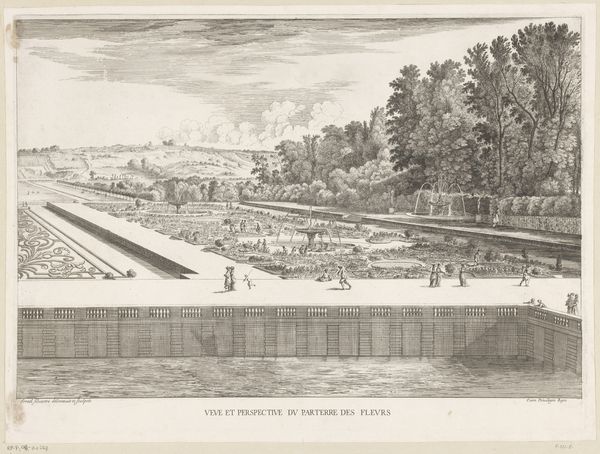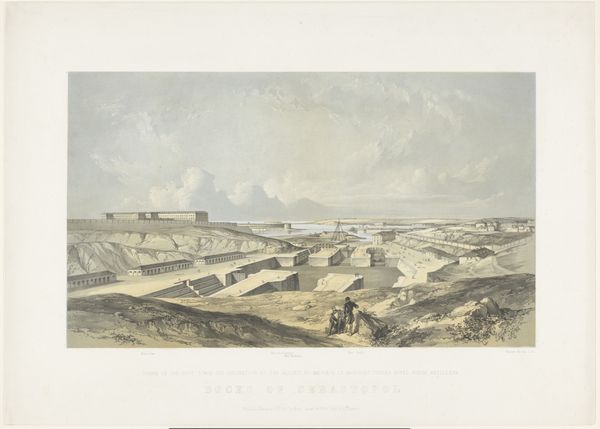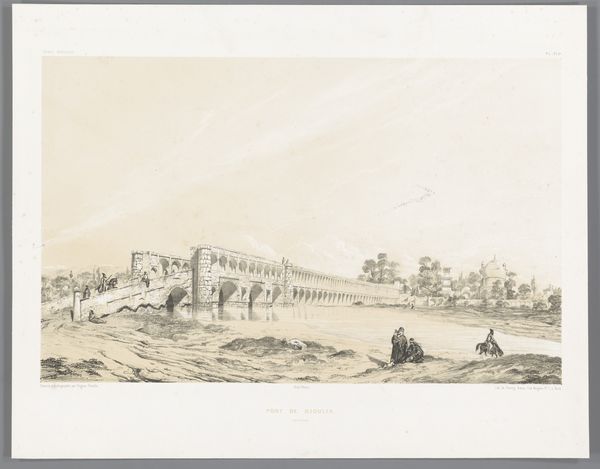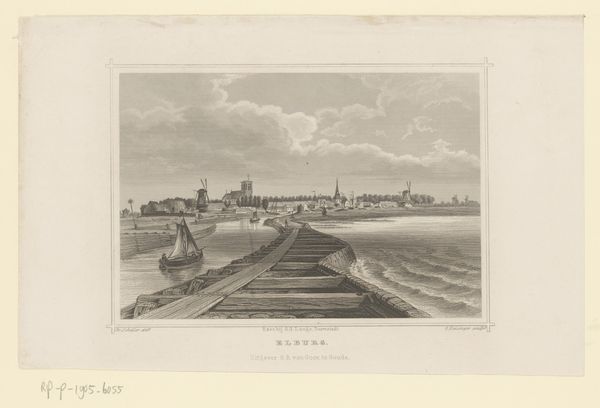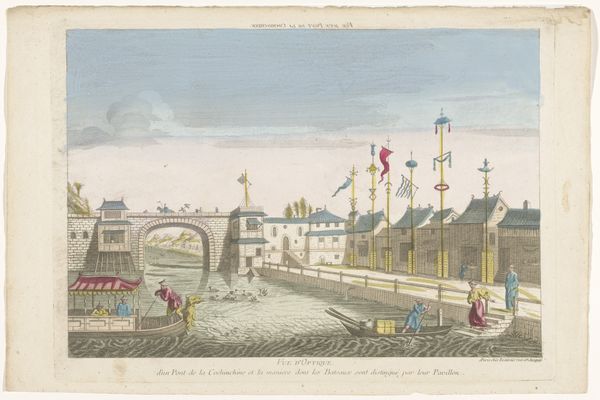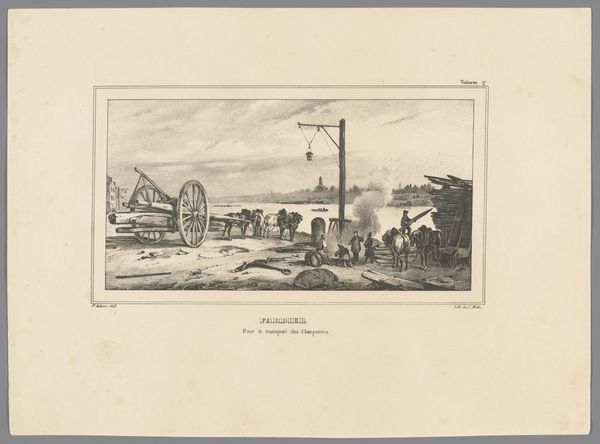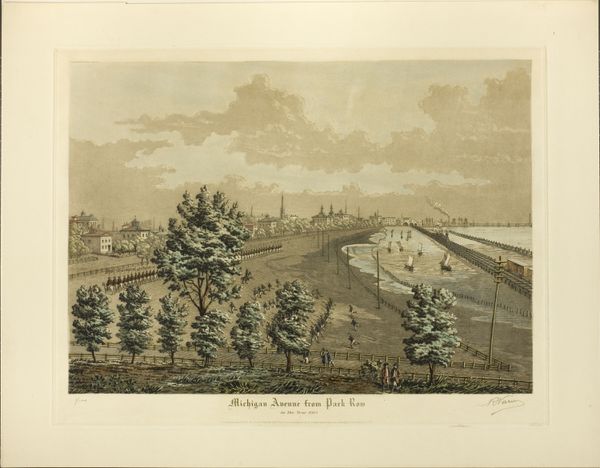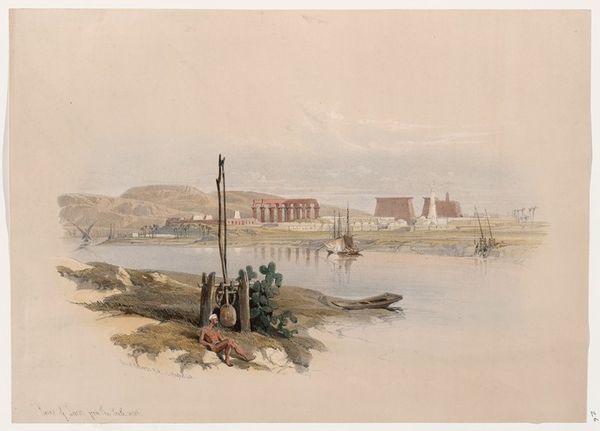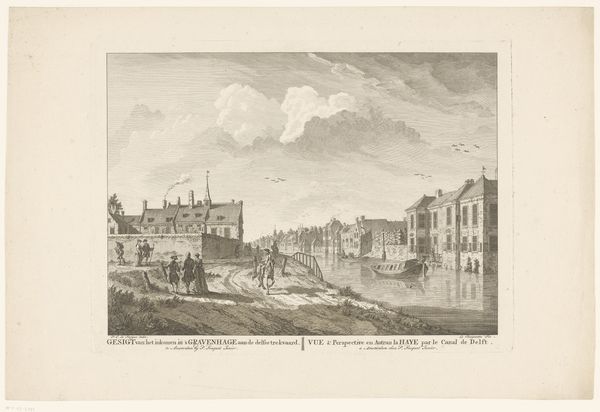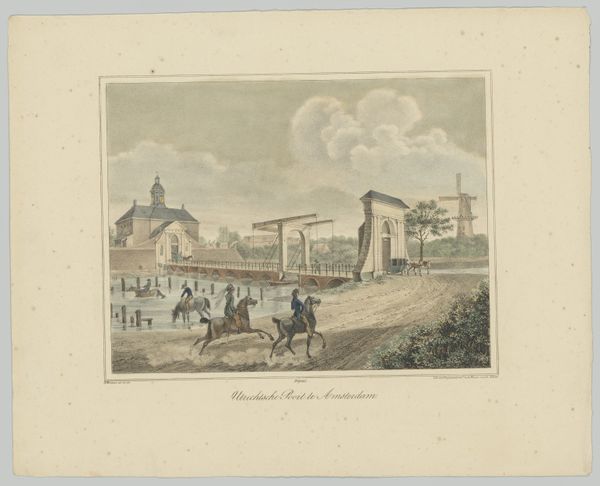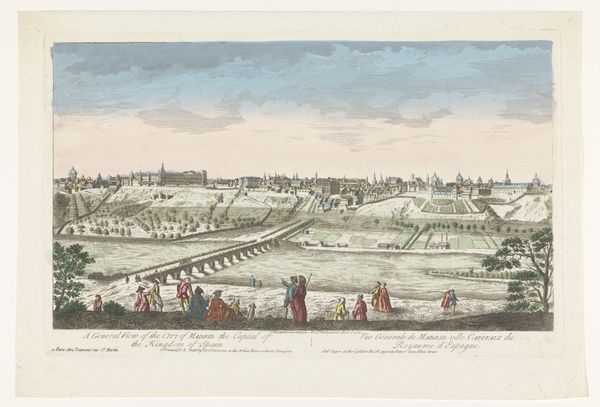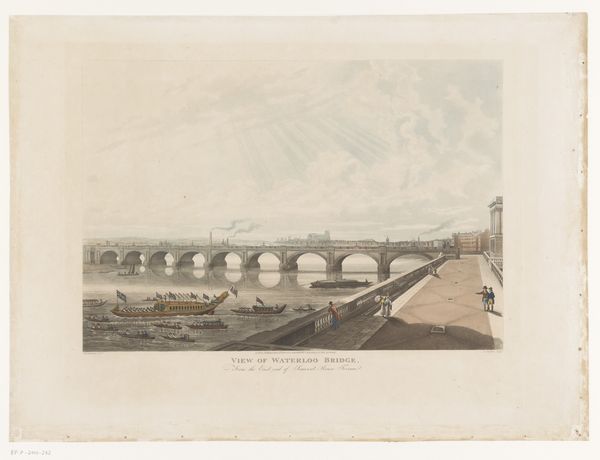
A View of Michigan Avenue from Randolph Street in the Year 1865 c. 1926
0:00
0:00
drawing, print, paper
#
drawing
# print
#
landscape
#
paper
#
cityscape
#
genre-painting
#
realism
Dimensions: 398 × 548 mm (image); 460 × 592 mm (plate); 555 × 707 mm (sheet)
Copyright: Public Domain
Curator: I find this lithograph captivating; it's Raoul Varin's rendering of "A View of Michigan Avenue from Randolph Street in the Year 1865." Even though created around 1926, it purports to illustrate Chicago during the Civil War era. The work captures a moment of profound transformation. Editor: It's evocative! I immediately feel a strong sense of transition—smoke billowing from the train, meeting the vastness of the lake; progress juxtaposed against nature. How do you interpret that interplay, considering its historical backdrop? Curator: Precisely. Chicago's explosive growth was intimately tied to railway expansion and westward movement. This image reveals the power dynamics implicit in that period; it symbolizes the North's industrial might compared to the agrarian South. There’s the depiction of a growing city that reflects a specific ideological position. Editor: It’s hard not to consider the environmental impact, even then. The railway line and train signal the rise of carbon emissions and all its associated challenges we face today. I see those workers alongside the train, which humanizes them as instruments of progress in ways that obscure a view of human capital, gender, race, and class during this time. What statements can this image suggest about that? Curator: I believe the artist wanted to capture the promise of advancement rather than engage with the socio-economic tensions of the time. In that sense, we’re compelled to see a singular, possibly whitewashed point of view. But it's valuable, still. It reveals how certain historical narratives were constructed, celebrated, and propagated. This is very much art *for* the people, about how technology would make their lives so much better. Editor: That context—examining its function as historical propaganda—makes it richer. Looking closely at the sailboats on the water as a counterpoint to the speeding locomotive suggests a subtle hint that there could still be a place for past times and modes of transportation as civilization modernizes. I appreciate the nuance. Curator: And it offers a lens for critical engagement, reminding us how art mediates historical memory and perpetuates collective understanding. Thank you for offering insightful viewpoints. Editor: The pleasure was all mine. Thinking critically is, after all, our shared responsibility.
Comments
No comments
Be the first to comment and join the conversation on the ultimate creative platform.
